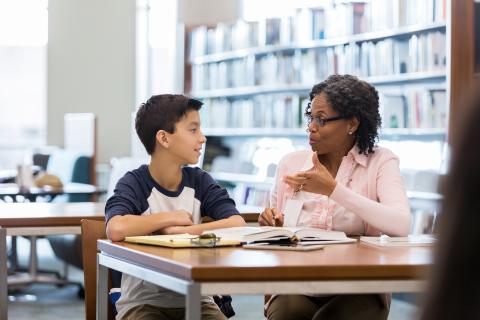The Power of Being Understood for Children and Youth in Foster Care


By Tanya Collins and Nanmathi Manian
I didn’t want to sit alone at lunch, so I would go to the library or lie down in the nurse’s office. It’s hard having to adjust and be uncomfortable at school and then going back to a home where I was uncomfortable too. - A quote from a student in the foster care system
As students involved in foster care move through the educational system, they encounter additional systemic and structural barriers beyond the trauma they have already experienced. They may struggle to fit in with peers and may often feel different and alone. Children in foster care, just like other children, want to feel connected and acknowledged. Schools can make that happen. Educators can have a tremendous impact on meeting the needs of these children and youth effectively by being aware of their histories, sensitive to any trauma they may have experienced, and creating a sense of safety and belonging in the classroom.
Here are five overarching points educators should be aware of concerning students in foster care.
As a unique group, students involved in foster care:
1. Come into foster care for reasons beyond their control
Often they have experienced abusive or neglectful environments at a young age and continue to be at risk for other adverse childhood experiences.
2. Have experienced tremendous loss
Transitions and school moves may happen quickly. Children and youth are not often able to say “goodbye.” The very act of being placed in foster care is traumatic for children because it means the loss of not only their family and caregivers entrusted to take care of them but friends, teachers, neighborhoods, and everything that is familiar. This type of loss can result in behaviors that bring about significant academic, behavioral, and social difficulties.
3. Want to feel connected and engaged
Often because of the stigma associated with being in foster care, students may feel isolated and not fit in with their peers. A safe and positive school environment offers an important source of protection, normalcy, and connectedness for children and youth in foster care. Building a sense of empowerment and control over their lives is crucial to youth’s ability to overcome the trauma they have experienced before and while in foster care.
4. Have many strengths
Students in foster care, just like other students, have many talents, desires, and skills. These strengths should be celebrated, nurtured, supported, and integrated into student engagement strategies. When provided with safe and supportive environments these students can thrive and become their fuller selves.
5. Are supported by federal and state legislation
Title I, Part A of the ESEA now requires state education agencies (SEAs) and local education agencies (LEAs) to take steps to minimize school placement changes for students in foster care and, in turn, to improve academic outcomes for students in foster care. In addition, the ESEA now requires SEAs and LEAs to report on academic outcomes for students in the foster care subgroup.
A call for a more nuanced, trauma-informed approach
Given the multiple challenges foster care students face, a trauma-informed (TI) understanding may be a good first step in influencing a student’s ability to be successful in school. We invite you to continue this conversation with us as we dive deeper into a more TI understanding of the needs and behaviors of children in foster care in the next blog post.




